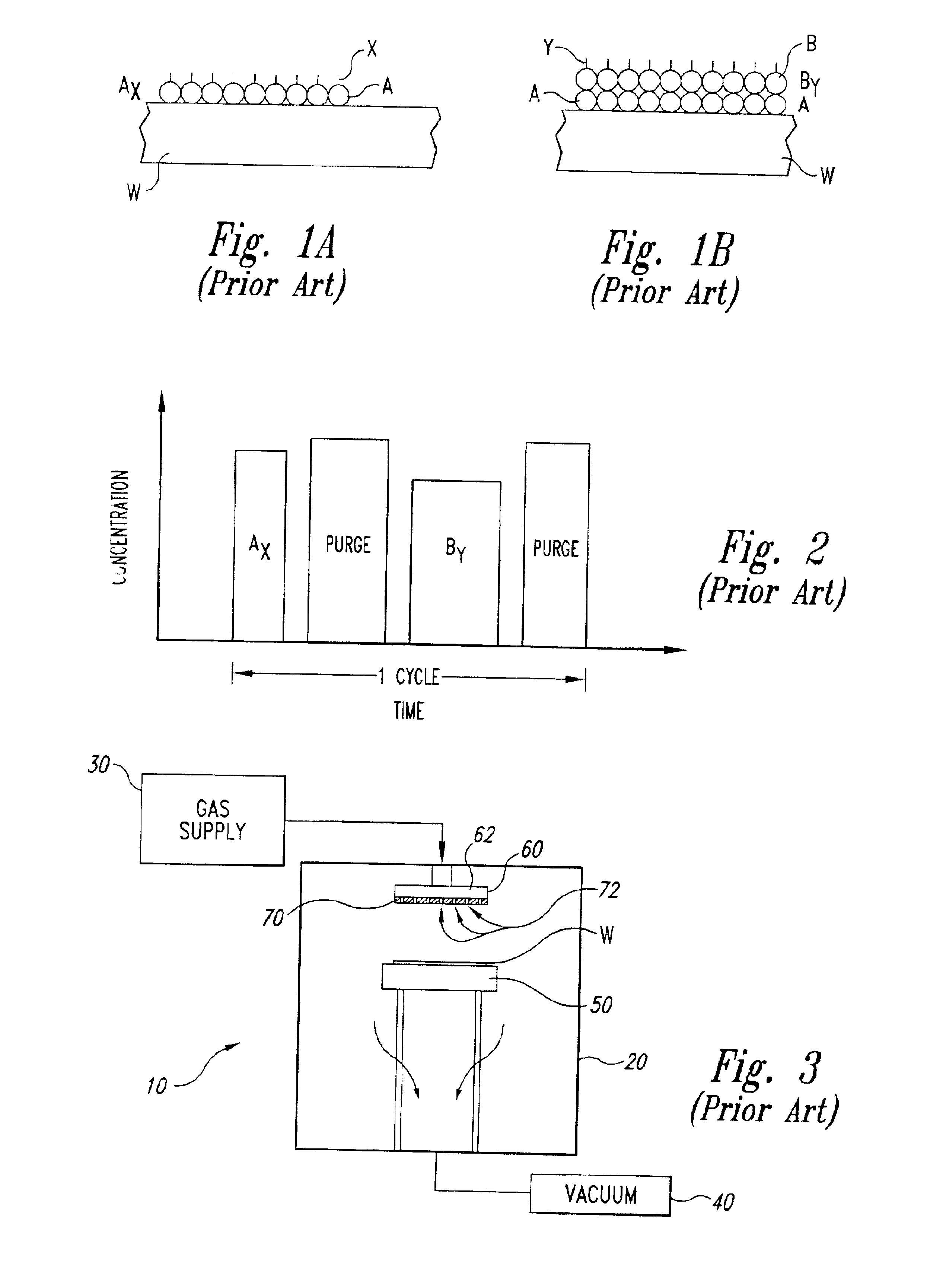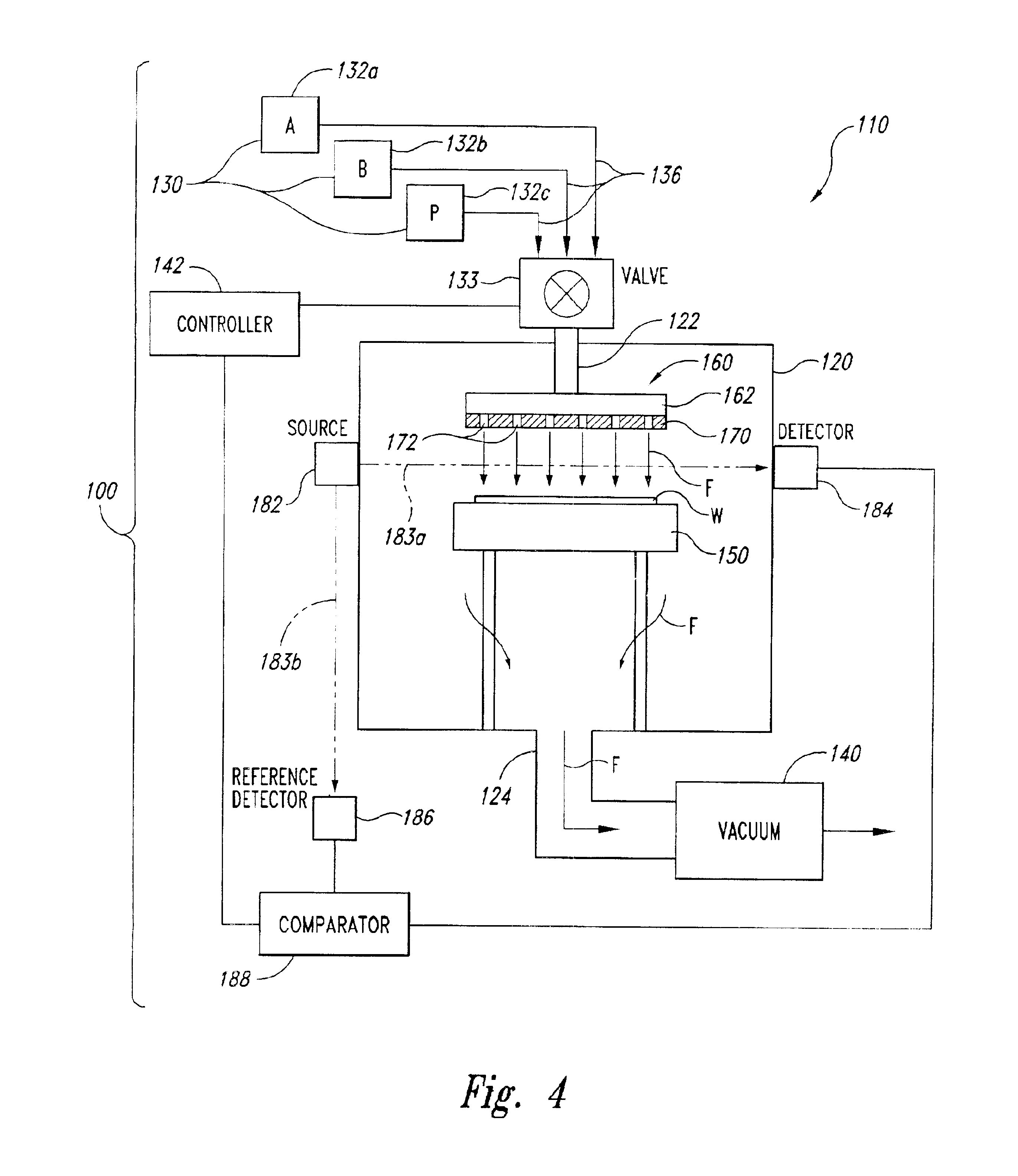Methods for controlling gas pulsing in processes for depositing materials onto micro-device workpieces
a technology of micro-device workpieces and gas pulsing, which is applied in the direction of metal material coating processes, coatings, special surfaces, etc., can solve the problems of film quality and uniformity, reaction may occur prematurely in the gas phase before reaching the substrate, and high temperatures are not typically desirable, so as to reduce enhance the consistency of ald processing, and accurately define the length of purge pulses
- Summary
- Abstract
- Description
- Claims
- Application Information
AI Technical Summary
Benefits of technology
Problems solved by technology
Method used
Image
Examples
Embodiment Construction
The following disclosure is directed toward reactors for depositing a material onto a micro-device workpiece, systems including such reactors, and methods for depositing a material onto a micro-device workpiece. Many specific details of the invention are described below with reference to depositing materials onto micro-device workpieces. The term “micro-device workpiece” is used throughout to include substrates upon which and / or in which microelectronic devices, micromechanical devices, data storage elements, and other features are fabricated. For example, micro-device workpieces can be semi-conductor wafers, glass substrates, insulative substrates, or many other types of substrates. The term “gas” is used throughout to include any form of matter that has no fixed shape and will conform in volume to the space available, which specifically includes vapors (i.e., a gas having a temperature less than the critical temperature so that it may be liquefied or solidified by compression at a...
PUM
| Property | Measurement | Unit |
|---|---|---|
| concentration | aaaaa | aaaaa |
| period of time | aaaaa | aaaaa |
| wavelength | aaaaa | aaaaa |
Abstract
Description
Claims
Application Information
 Login to View More
Login to View More - R&D
- Intellectual Property
- Life Sciences
- Materials
- Tech Scout
- Unparalleled Data Quality
- Higher Quality Content
- 60% Fewer Hallucinations
Browse by: Latest US Patents, China's latest patents, Technical Efficacy Thesaurus, Application Domain, Technology Topic, Popular Technical Reports.
© 2025 PatSnap. All rights reserved.Legal|Privacy policy|Modern Slavery Act Transparency Statement|Sitemap|About US| Contact US: help@patsnap.com



